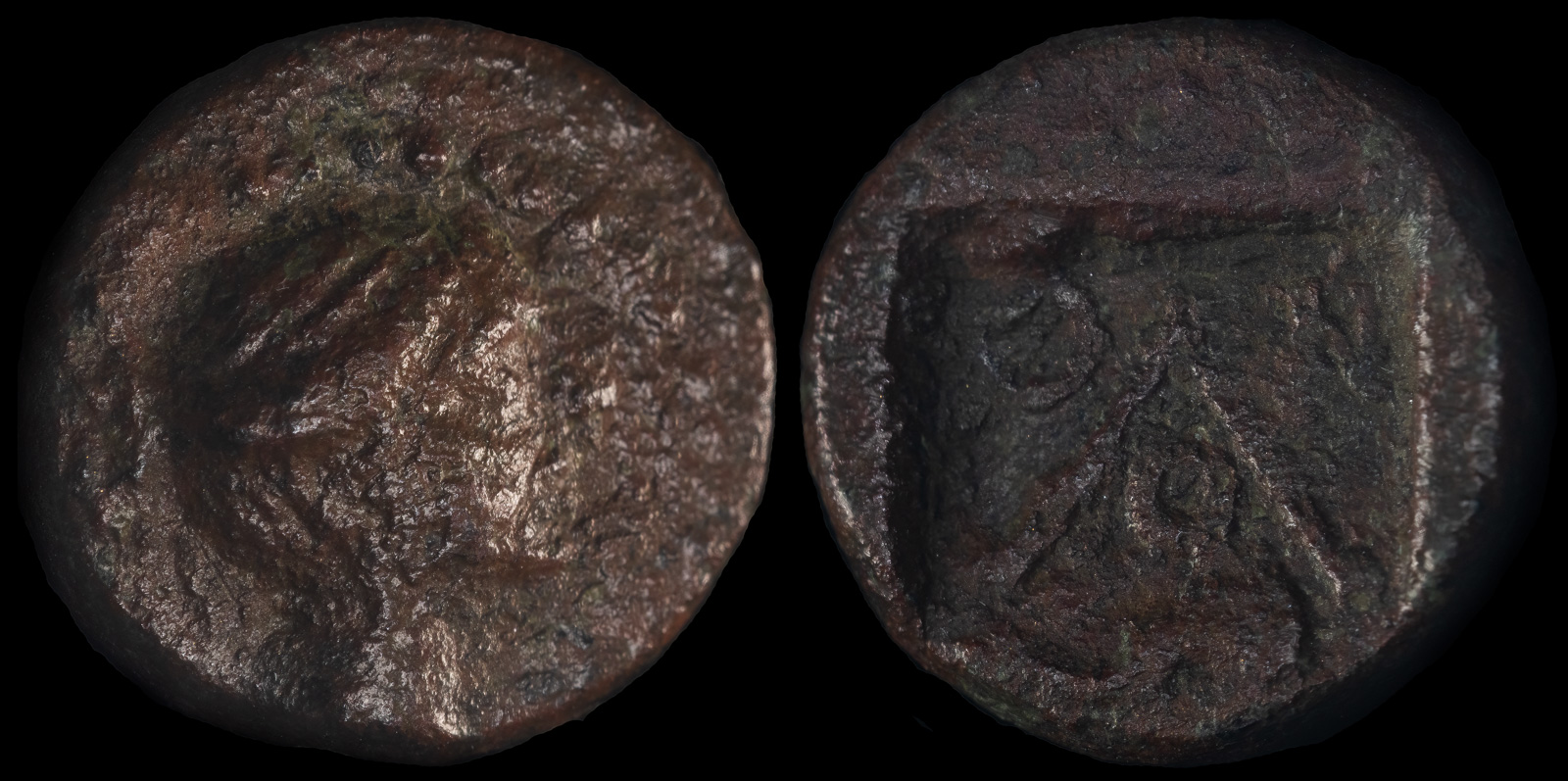
Circa 300-270 BCE
11mm 1.25g
Obverse: Draped bust of Artemis Britomartis right
Reverse: Ethnic above dolphin right; all within incuse square
BMC 2, Svoronos, Numismatique 7; SNG Copenhagen 509; Traeger 288
Today, the ruins of ancient Olous on Crete may be visited, but you’ll need to don a snorkel and fins to see them, since they were submerged around the 3rd century CE. The idea of a sunken city fascinates me, and a coin of Olous – even though rare – was high on my list.
How it got that way is an interesting story. It mostly involves a guy named Nick, a very ambitious man, who dreamed of making their olympic swim team. Each day he practiced in the harbor along the narrow strip of land that joined mainland Crete to Kalydon Peninsula.
Everyone in the city thought he was ridiculous. “Swimming won’t be an olympic sport for another 1600 years!” people told him, but that didn’t dissuade Nick. What did challenge him, however, was the fact that he didn’t have an olympic-sized pool. How could he ever hope to measure his qualifying time if his pool was non-standard?
So, Nick prayed every day to Zeus. He visited every temple of his in Crete including the Dikteon Cave where he was born, and of all the men in Greece, no one sacrificed more to Zeus than Nick. Eventually, Zeus began to feel sorry for him. Many prayed for outrageous things, so an olympic swimming pool wasn’t much of an ask. Finally, he charged a group of workers to build it.
In order to maximize the surprise, they set to work at night. The only problem were the dimensions. Zeus had told them it should be a bit under 110 cubits in length and 55 cubits in width, but a cubit was a non-standard unit. How big exactly should it be? There was also the issue of zoning, since the city was tightly packed on the isthmus and free space for such a pool was a non-starter. To address these questions, the workers utilized a sturdy-looking retaining wall and erred on the side of making the pool too large.
However, the owner of that retaining wall, Phil, had never bothered obtaining the right permits and when the force of the pool water was placed against it, the entire thing broke. With the city quickly submerging, the workers decided to call it quits and skedaddled.
The next morning, the mayor of Olous woke to a sharp knock at his door. It was a dolphin asking to borrow a cup of sugar. The mayor, still quite groggy, obliged the request and went back to bed. He woke again a half hour later and was perturbed to discover his shower wasn’t working. When he then noticed that all his towels were wet, reality arrived. Everything was underwater.
Everyone was of course furious at Nick because his pool had destroyed the city, but there wasn’t anything they could do short of charging tourists to snorkel over their town.
On the obverse of this coin is an image of Britomartis, who was a goddess worshipped in much of Crete. Legend has that she was chased by King Minos and jumped into a fisherman’s net. For some reason, the fisherman, instead of inquiring why a goddess was in his net, sailed all the way to Aegina, where they also began worshipping her.
Diodorus Siculus called BS on that tale, though, since he rightly pointed out that Britomartis or her best friend, Artemis, could have vaporized Minos whenever she wanted. Some may think that she might have just had a thing for fishermen, but as a virgin goddess of chastity, that was unlikely. Really, back then you could either travel between islands by boat or by flying horse, but the horses were all union members and the fares were probably crazy.
A temple to Britomartis, complete with a wooden statue, existed in Olous. Since she hung around with Artemis a lot, and neither was very welcoming of guys hanging around to engrave their portraits, they eventually came to be associated as the same goddess.